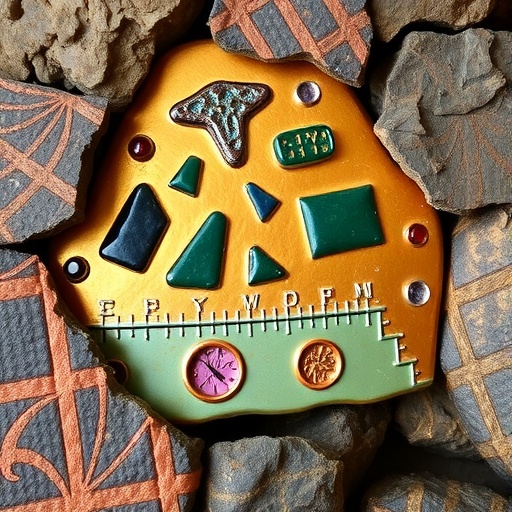Recent archaeological research has brought to light new understanding regarding early copper procurement practices, particularly at the Gre Fılla site. The study, spearheaded by a research team led by Ü. Muşkara and his colleagues, investigates the nuances of ore selection beyond mere color. The significance of this research lies not only in its implications for the understanding of ancient metallurgy but also in how it reshapes our perception of early human interaction with their environment and resources.
One of the primary assertions of the study is that the diversity of ore types selected by ancient humans may not have been purely a function of aesthetic preferences. The researchers postulate that various attributes of copper ores could have influenced their selection—factors such as malleability, conductivity, and local availability likely played crucial roles in the choice of materials for early metalworking. This multi-analytical approach underscores a complex decision-making process, fundamentally challenging prior assumptions that color alone drove the selection criteria.
The systematic methodology employed by the researchers incorporates multiple analytical techniques, including mineralogical assessments and experimental archaeology. This multifaceted approach allows for a more comprehensive understanding of the properties of different copper ores and how these properties could have affected their usability in practical applications. By examining the physical and chemical aspects of the ores, the researchers can argue for a broader set of selection criteria than previously acknowledged in archaeological scholarship.
The Gre Fılla site, the focal point of this study, has yielded rich deposits of copper ores that provide invaluable insight into early metallurgical practices. Through careful excavation and analysis, the researchers highlight the variations in ore composition and their implications for understanding the technological advancements of ancient societies. Interestingly, the findings suggest a sophisticated understanding of the materials available to these early metallurgists, hinting at a complex relationship between human agents and geological resources.
Additionally, the team’s findings imply that early societies engaged in a kind of resource management that prioritized the efficient use of available ores. This suggests a level of foresight and planning, as these communities sought to maximize their gains from the natural resources at their disposal. Such insights expand our understanding of the socio-economic structures that may have existed in these early cultures, as they navigated both the technological challenges of metallurgy and the natural limits posed by their environments.
Moreover, the implications of the study extend well beyond the realm of archaeology; they encourage a reevaluation of how we understand technological evolution in human societies. The researchers provide compelling evidence that the transition to metallurgy was not merely a linear path of innovation but rather a multifaceted process influenced by a variety of environmental and social factors. This understanding prompts a reconsideration of other ancient technological advancements and how different societies may have approached such changes.
The interdisciplinary nature of the research team underscores the richness of the findings. By bringing together experts in archaeology, geology, and material science, the study exemplifies how collaborative efforts can yield new insights and perspectives. It reflects a growing trend in archaeological research to embrace a holistic approach, emphasizing that our understanding of ancient practices should not be confined to isolated disciplines, but rather explored through the interconnectedness of various fields.
As the team delves deeper into their analysis, they provide a critical lens on the biases present in previous studies that may have overlooked the broader context of ore selection. The acknowledgment of these biases presents an opportunity for future research to build on this foundation, aiming for a more nuanced understanding of early metallurgical practices across various cultures and regions.
The research raises intriguing questions about the cultural significance of metallurgy and how it may have influenced social dynamics within early human communities. The selection of specific ores may reflect broader aesthetic values, ritual practices, or technological preferences that defined different groups. This aspect invites further exploration into the symbolic dimensions of early copper use, adding depth to our interpretation of material culture in ancient societies.
Furthermore, as the publication makes its way into the scientific community, it has the potential to spark conversations in both academic and public spheres about the origins and development of metallurgy. By shedding light on the complexities of early technological practices, the research encourages a re-examination of how we appreciate ancient achievements—emphasizing that these innovations were not merely practical endeavors but also embedded within a rich tapestry of cultural significance.
In conclusion, the research conducted by Muşkara and his team offers a vital contribution to the understanding of early copper procurement, reshaping our perceptions of ancient technological practices. By unveiling the interplay between ore diversity and practical utility, the study lays the groundwork for future investigations into the intricate relationship between humans and the resources they harnessed. As the academic community engages with these findings, the discourse surrounding early metallurgy is likely to evolve, paving the way for new questions and research avenues within archaeology and related fields.
This exciting development strengthens the narrative of human ingenuity and adaptability, reminding us that the past is often more complex than it appears. The exploration of Gre Fılla serves as a lens through which we can better understand not just the technologies of ancient peoples, but also the myriad factors that shaped their decisions and, ultimately, their legacies in the annals of history.
Subject of Research: Early copper ore procurement at Gre Fılla
Article Title: Did ore diversity reflect selection beyond colour? A multi-analytical insight into early copper ore procurement at Gre Fılla.
Article References: Muşkara, Ü., Telli, M.B., Bozbaş, S.K. et al. Did ore diversity reflect selection beyond colour? a multi-analytical insight into early copper ore procurement at Gre Fılla. Archaeol Anthropol Sci 17, 239 (2025). https://doi.org/10.1007/s12520-025-02348-7
Image Credits: AI Generated
DOI: https://doi.org/10.1007/s12520-025-02348-7
Keywords: copper, metallurgy, archaeology, Gre Fılla, ore selection, ancient technologies, cultural significance, interdisciplinary research.




